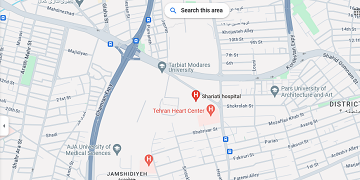- 1404/09/22 A Comprehensive Study of the Global COVID 19 Pandemic and Fungal Co Infections: A Review
- 1404/09/22 Exosome functionalized collagen coated 3D printed PCL scaffold for enhanced osteogenic differentiation and bone regeneration: an in vitro and in vivo study
- 1404/09/22 Investigating the Level of MUC5B Expression in the Plasma of Patients with Idiopathic Pulmonary Fibrosis (IPF) Compared to Healthy Individuals
- 1404/08/27 Investigation of the effect of bone marrow derived exosomes on the induction of MIR139 b expression and the role of P53 in its regulation in head and neck squamous cell carcinoma cell line
- 1404/08/27 The Comparison between the Level of Anxiety and General Quality of Life in Parents of Children with Cleft Lip and Palate With And Without Nasoalveolar Molding (NAM).
- 1404/08/27 Investigation of the Effects of Bone Marrow Derived Mesenchymal Stem Cell Extracellular Vesicles Combined with Zinc Oxide Nanoparticles on the Regulation of Gene Expression Related to Facial and Neck Skin Tissue Regeneration
- 1404/08/22 The Journal of Craniomaxillofacial Research has been accepted and indexed in Scopus
About of Cleft Lip and Cleft Palate
 Cleft lip and cleft palate are congenital conditions that occur when a baby’s lip or mouth do not form properly during pregnancy. These conditions can affect a child’s ability to eat, speak, hear, and breathe, but they can typically be corrected with surgery.
Cleft lip and cleft palate are congenital conditions that occur when a baby’s lip or mouth do not form properly during pregnancy. These conditions can affect a child’s ability to eat, speak, hear, and breathe, but they can typically be corrected with surgery.
Cleft Lip: A cleft lip is a physical split or separation of the two sides of the upper lip. It occurs when the tissue that forms the lip does not join completely before birth. This results in a gap in the lip that can be small or extend from the lip into the nose. A cleft lip can occur on one side (unilateral), both sides (bilateral), or in the middle (which is rare).
Cleft Palate: A cleft palate occurs when the tissue that makes up the roof of the mouth (palate) does not come together completely during pregnancy. A cleft palate can involve the soft palate (the back part of the roof of the mouth) and/or the hard palate (the front part of the roof of the mouth). This condition can result in an opening that connects the mouth to the nasal cavity.
Causes: Cleft lip and palate result from a combination of genetic and environmental factors, but the exact cause is not always known. Some known risk factors include:
Family history of clefts.
Exposure to certain substances during pregnancy (like alcohol, tobacco, or certain medications).
Maternal obesity or diabetes during pregnancy.
Nutritional deficiencies, particularly in folic acid.
Complications: Children born with cleft lip and/or palate may face several challenges, such as:
Feeding difficulties: Especially in cases of cleft palate, where there can be an opening between the mouth and the nasal cavity.
Speech and language problems: Due to abnormal mouth structure, speech may be nasal or unclear.
Ear infections and hearing problems: Because the cleft palate can affect the Eustachian tubes, leading to fluid buildup and ear infections.
Dental problems: Children may have missing, malformed, or extra teeth.
Treatment: Treatment for cleft lip and palate typically involves a series of surgeries and ongoing care throughout childhood and adolescence. The treatment team may include surgeons, orthodontists, speech therapists, audiologists, and other specialists.
Surgery: Cleft Lip Surgery: Typically performed within the first few months of life (around 3 to 6 months). This surgery closes the lip and may improve the appearance and function of the mouth.
Cleft Palate Surgery: Usually performed between 6 and 18 months to close the palate and create a functional roof of the mouth, allowing for normal speech development. Additional surgeries may be needed as the child grows to refine appearance and improve function.
Speech Therapy: Children may require speech therapy to overcome speech difficulties caused by the cleft palate.
Orthodontic Care: As children grow, they may need braces or other dental appliances to align teeth properly.
Hearing Support: Regular ear check-ups and possible ear tubes to prevent hearing loss from infections.
1. Frequently asked questions of cleft lip and palate patients.
2. Files of cleft lip and palate patients.
3. Educational videos for cleft lip and palate patients.
*** To cooperate, please click on the details ***


